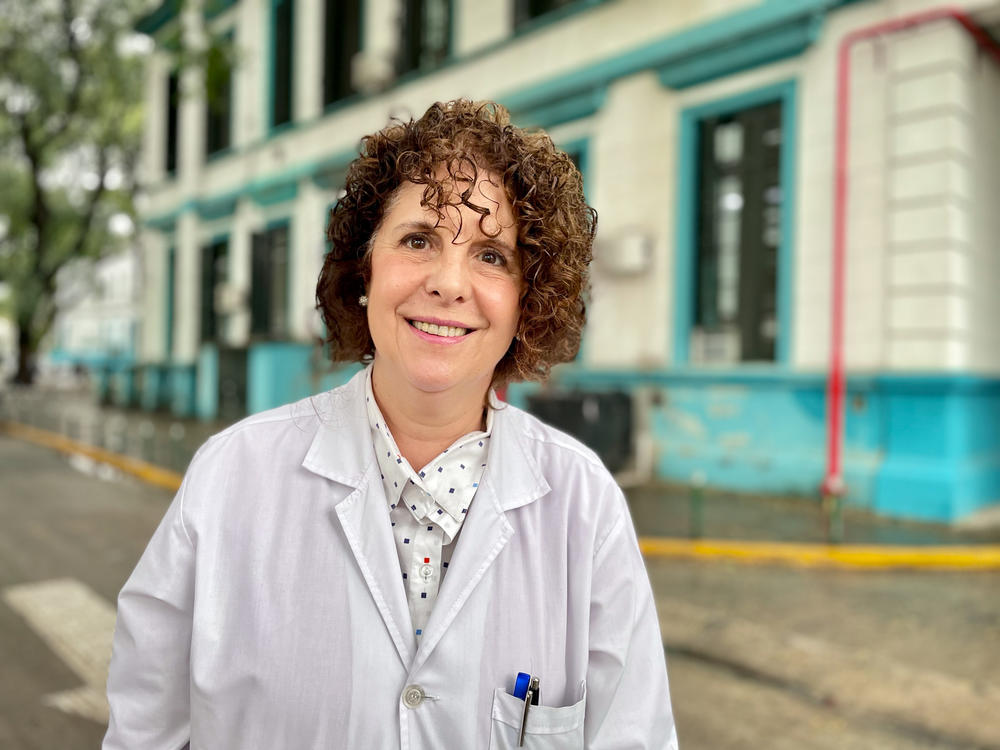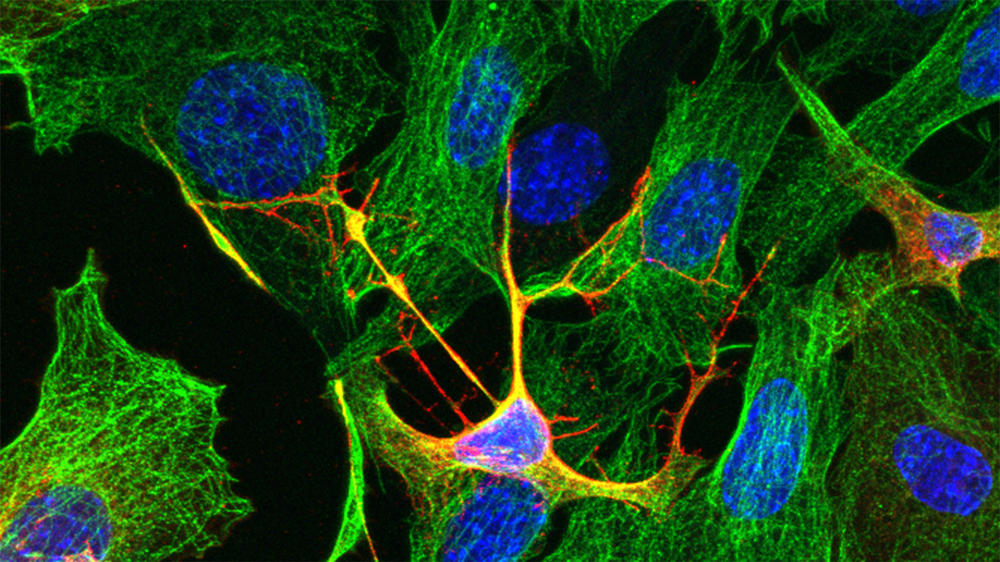Section Branding
Header Content
Chikungunya virus surges in South America. But a new discovery could help outfox it
Primary Content
When someone enters the hospital with the chikungunya virus, there's no mistaking it.
"The patients came here with fever and also with pain in their joints," says Dr. Susana Lloveras, an infectious disease physician at Hospital Muñiz in Buenos Aires, Argentina, one of several South American countries where the mosquito-borne virus has surged in 2023. The joints in their hands and feet commonly ache along with their knees. The pain can get so bad that some have difficulty walking or even holding a cup of coffee.
"It affects the quality of life," says Lloveras. "You are well. And suddenly, you can't move, you need another person help you to do the common task of every day."
Although the disease is rarely fatal, the worst symptom can be long-lasting joint pain. But new advances, including a study just published this week, may soon help us outfox this virus — whose name is pronounced "chicken-GOON-ya" and according to the World Health Organization, comes from the Kimakonde language, spoken in parts of Tanzania and Mozambique, and means "to become contorted."
Counting cases
The case count in South America this year is already up to a quarter of a million new cases. The outbreak is at its fiercest in Paraguay, which has seen over 100,000 diagnoses.
Over the years, Dr. Lloveras says she has seen cases of chikungunya in Buenos Aires "but it is not common for us. No more than one or two cases each year." And always from people bringing the mosquito-borne virus with them from other countries.
But earlier this year, she says, "We receive every day patients with chikungunya including some with no travel history." Which means, for the first time, mosquitoes within Buenos Aires were transmitting the disease.
Why is the disease's footprint growing? "Wherever the mosquitoes goes, we will have chikungunya — it's a global concern," says Nischay Mishra, a virologist at Columbia University School of Public Health. With the climate changing and temperatures getting warmer, "there are more chances mosquitoes can survive everywhere," he says.
Besides South America, Chikungunya is a problem in other parts of the globe: India, China and numerous countries in Africa. Even in the US, Texas and Florida have reported local transmission of the disease in previous years.
Lloveras prescribes medicine to ease the fever and pain, but she tells her patients the disease just has to run its course.
That can be challenging because some people suffer from the joint pain for months or even years, even though their immune systems have created antibodies to clear the virus.
"We don't really understand what causes that debilitating arthritis," says Margaret Kielian, a virologist at the Albert Einstein College of Medicine. "Is there a virus hiding out in the joints? Is it inflammation?"
A sneaky way to infect cells
Now, in a new study conducted in mice and published in Nature Microbiology, Kielian and her colleagues found something that could bring us a step closer to solving this mystery.
Most viruses make us sick by turning our cells into virus-making machines. They release loads of new viral particles that can go on to infect new cells. Chikungunya does that, but it's got another trick.
"The virus induces the infected cell to generate these very dramatic long extensions that can go from the infected cell to neighboring cells," says Kielian.
One or two tendrils, sometimes as long as the cell itself, snake outwards, at times toward uninfected cells. And these tendrils can escape attack by the immune system. "That contact between the infected cell and the uninfected cell shields the virus from the antibodies," says Kielian. "And that's how that cell gets infected."
"It's early days," says Kielian, "but it suggests this might be one mechanism by which the virus can get established, maybe in joint tissues. That may be important in causing the arthritis. We'll see."
"This information is very useful," especially as it relates to vaccine development, says Mishra, who wasn't involved in the study. "How the vaccine is gonna deal with this alternative mechanism of infection, that will be very interesting and very important."
Several vaccine efforts are underway and Mishra says one may be approved as soon as the end of this year. It would be a welcome development in a place like Hospital Muñiz in Buenos Aires.
"We need a vaccine because this is another tool [to] treat this kind of disease," says Dr. Lloveras. She adds that in the future, she and her team will need every tool they can get to fight all manner of mosquito-borne viruses, including chikungunya.
Copyright 2023 NPR. To see more, visit https://www.npr.org.


